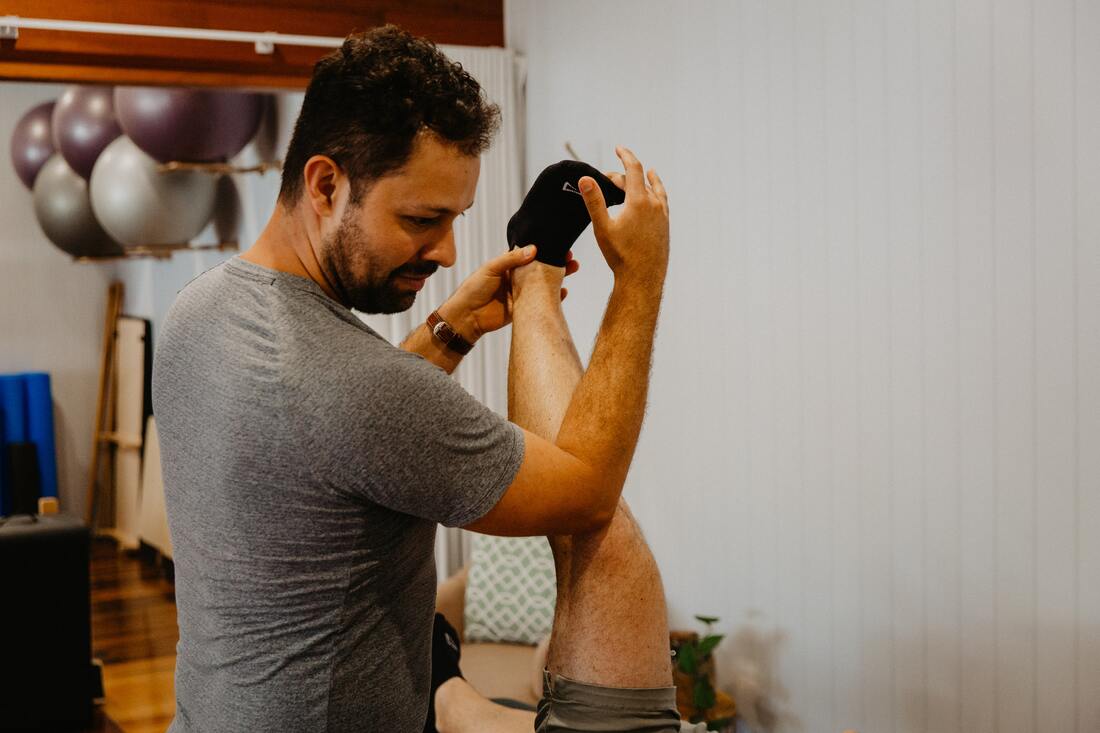Physiotherapy for Morton's Neuroma.
What is Morton's Neuroma?
Morton's Neuroma is a painful condition that affects the nerves in the foot, specifically the interdigital nerves located between the metatarsal bones. It commonly occurs in the space between the third and fourth toes, causing inflammation, thickening, and the formation of a benign growth known as a neuroma. The exact cause of Morton's Neuroma is not fully understood but is often associated with repetitive stress, wearing tight or ill-fitting footwear, foot deformities, or trauma.
How is Morton's Neuroma diagnosed?
Accurate diagnosis is crucial to effectively managing Morton's Neuroma. Physiotherapists employ a comprehensive assessment that includes:
How can physiotherapy help Morton's Neuroma?
Physiotherapy plays a vital role in managing Morton's Neuroma by offering a holistic approach to alleviate pain, improve foot function, and prevent further progression. Treatment methods may include:
How can clinical Pilates help with Morton's Neuroma rehabilitation?
Clinical Pilates, when integrated into a comprehensive treatment plan, can be beneficial for Morton's Neuroma rehabilitation. Some potential benefits include:
Non-surgical Treatment Options
While surgery is sometimes necessary, many individuals with Morton's Neuroma can find relief and improve their condition with non-surgical treatments. This section will explore additional conservative treatment options, such as:
Prognosis for Morton's Neuroma
With appropriate treatment and management, the prognosis for Morton's Neuroma is generally positive. Physiotherapy interventions, including a combination of the strategies mentioned above, can effectively alleviate pain, improve foot function, and enhance quality of life for most individuals. However, the timeframe for recovery can vary depending on the severity of the condition, individual factors, and adherence to the treatment plan. In some cases, surgical intervention may be necessary if conservative measures fail to provide adequate relief.
If you are experiencing foot pain and think you may have Morton's Neuroma it is important to seek treatment as soon as possible. Our experienced team of physiotherapists at Coorparoo and Tarragindi would love to help. Book online via the link below, call us on 07 3706 3407 or email [email protected].
Morton's Neuroma is a painful condition that affects the nerves in the foot, specifically the interdigital nerves located between the metatarsal bones. It commonly occurs in the space between the third and fourth toes, causing inflammation, thickening, and the formation of a benign growth known as a neuroma. The exact cause of Morton's Neuroma is not fully understood but is often associated with repetitive stress, wearing tight or ill-fitting footwear, foot deformities, or trauma.
How is Morton's Neuroma diagnosed?
Accurate diagnosis is crucial to effectively managing Morton's Neuroma. Physiotherapists employ a comprehensive assessment that includes:
- Medical history: Gathering information about symptoms, previous injuries, footwear habits, and activities that exacerbate or alleviate pain.
- Physical examination: Assessing the affected foot for tenderness, swelling, and abnormal sensation. Manipulation and compression of the forefoot may reproduce symptoms.
- Diagnostic imaging: X-rays and ultrasound scans may be utilised to rule out other conditions and confirm the presence of a neuroma.
How can physiotherapy help Morton's Neuroma?
Physiotherapy plays a vital role in managing Morton's Neuroma by offering a holistic approach to alleviate pain, improve foot function, and prevent further progression. Treatment methods may include:
- Footwear advice: Recommendations on appropriate footwear to reduce pressure on the affected area and enhance comfort.
- Manual therapy: Hands-on techniques, such as joint mobilisations and soft tissue release, can help improve foot mechanics and reduce nerve irritation.
- Exercise therapy: Targeted exercises to strengthen the foot muscles, enhance flexibility, and improve overall foot function.
- Orthotic prescription: Customised shoe inserts or orthotics can redistribute pressure and provide support to the foot, reducing symptoms.
- Education and self-management: Guidance on activity modification, self-care strategies, and ergonomic adjustments to prevent aggravation and enhance recovery
How can clinical Pilates help with Morton's Neuroma rehabilitation?
Clinical Pilates, when integrated into a comprehensive treatment plan, can be beneficial for Morton's Neuroma rehabilitation. Some potential benefits include:
- Strengthening: Targeted Pilates exercises can improve foot, ankle, and leg muscle strength, enhancing overall stability and foot function.
- Flexibility and range of motion: Pilates exercises can promote joint mobility and flexibility, aiding in the restoration of optimal foot mechanics.
- Body awareness: Pilates focuses on proper alignment, postural control, and movement awareness, which can help individuals with Morton's Neuroma develop better foot mechanics and reduce stress on the affected area.
- Core stability: Pilates exercises targeting the core muscles can improve overall stability and enhance movement efficiency, reducing strain on the foot during daily activities.
Non-surgical Treatment Options
While surgery is sometimes necessary, many individuals with Morton's Neuroma can find relief and improve their condition with non-surgical treatments. This section will explore additional conservative treatment options, such as:
- Medications: Over-the-counter non-steroidal anti-inflammatory drugs (NSAIDs) may help reduce pain and inflammation associated with Morton's Neuroma. However, long-term use should be monitored by a healthcare professional.
- Padding and taping: Applying padding or using specialised tapes can help alleviate pressure on the neuroma and provide cushioning, enhancing comfort.
- Injection therapy: Corticosteroid injections may be used to reduce inflammation and provide temporary relief. However, the potential risks and benefits of this treatment should be discussed with a healthcare professional.
- Activity modification: Modifying or avoiding activities that exacerbate symptoms, such as high-impact sports or activities that involve repetitive forefoot pressure, can help reduce discomfort and promote healing.
Prognosis for Morton's Neuroma
With appropriate treatment and management, the prognosis for Morton's Neuroma is generally positive. Physiotherapy interventions, including a combination of the strategies mentioned above, can effectively alleviate pain, improve foot function, and enhance quality of life for most individuals. However, the timeframe for recovery can vary depending on the severity of the condition, individual factors, and adherence to the treatment plan. In some cases, surgical intervention may be necessary if conservative measures fail to provide adequate relief.
If you are experiencing foot pain and think you may have Morton's Neuroma it is important to seek treatment as soon as possible. Our experienced team of physiotherapists at Coorparoo and Tarragindi would love to help. Book online via the link below, call us on 07 3706 3407 or email [email protected].
Who to book in with:
Emma Cameron
|
Mauricio Bara
|
Yulia Khasyanova
|
If you are unsure about which appointment type is right for you, please don't hesitate to get in touch with our friendly reception staff by calling 07 3706 3407 or emailing [email protected].



